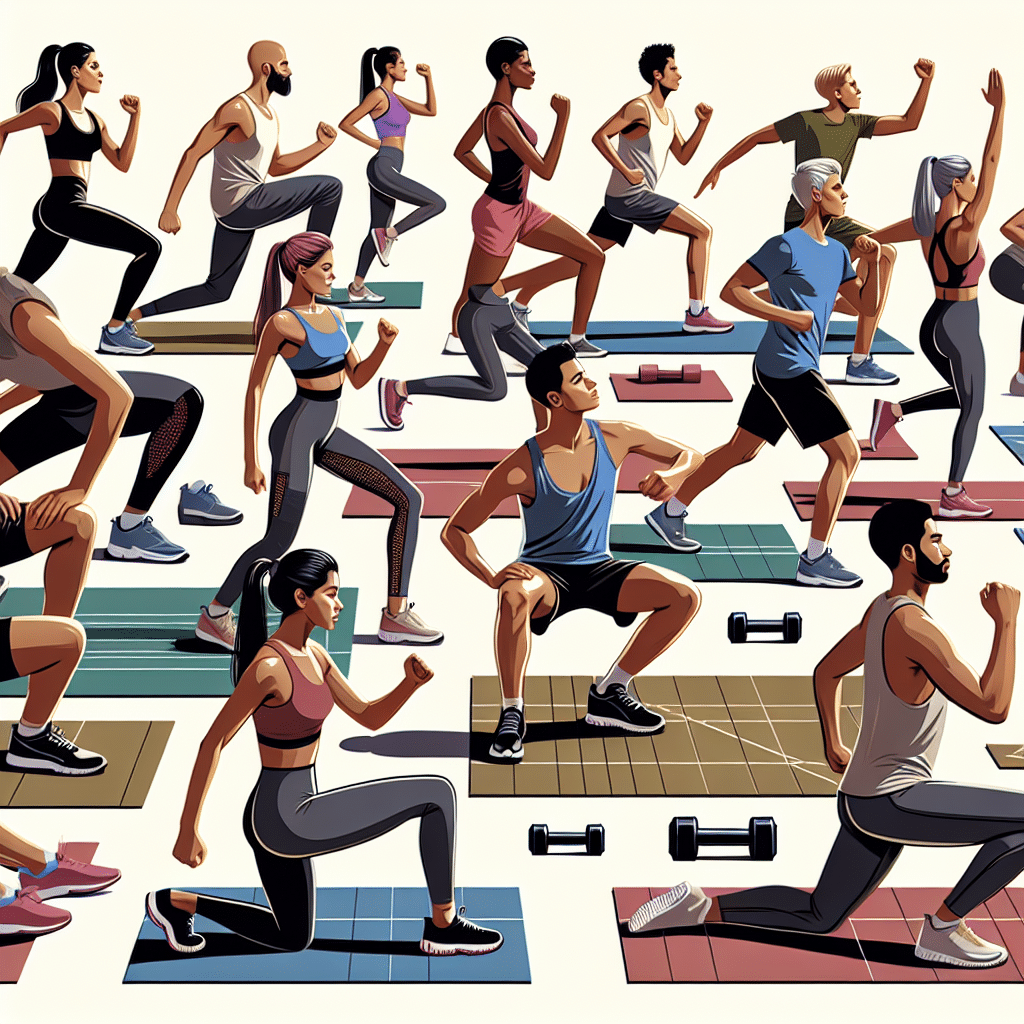Safe Full-Body Workouts for Fitness Newbies
Understanding Full-Body Workouts
Full-body workouts engage multiple muscle groups in a single session, providing a time-efficient way to build strength, endurance, and improve overall fitness. For newbies, it’s crucial to focus on foundational movements that not only promote strength but also enhance mobility and reduce the risk of injuries.
Benefits of Full-Body Workouts
- Efficient Use of Time: By targeting several muscle groups, you can achieve a balanced workout in a shorter timeframe.
- Improved Strength: Engaging your entire body helps in progressively building strength across various muscle groups.
- Increased Fat Loss: Full-body workouts boost calorie burn due to the larger muscle engagement.
- Enhanced Mobility: Incorporating functional movements improves flexibility and coordination.
Key Considerations for Newbies
- Consultation: Always consult a healthcare professional or a certified trainer before starting a workout routine, especially if you have pre-existing conditions.
- Warm-Up: Prioritize dynamic stretching or light cardio for at least 5-10 minutes before every workout.
- Listen to Your Body: Focus on proper form. If something feels off or painful, reduce the weight or modify the move.
Safe Full-Body Workout Structures
1. Bodyweight Exercises
Bodyweight exercises are ideal for beginners as they don’t require any equipment and can be done anywhere.
Workout Example:
-
Squats: 3 sets of 10-15 reps
- Stand with feet shoulder-width apart. Lower your body as if sitting back in a chair, keeping chest up.
-
Push-Ups (Knee Push-Ups for Beginners): 3 sets of 8-12 reps
- Start on your knees, hands slightly wider than shoulders. Lower your chest to the ground, keeping elbows close.
-
Lunges: 3 sets of 10 reps per leg
- Step forward with one leg, lowering hips until both knees are bent at about 90 degrees.
-
Plank: 3 sets of 20-30 seconds
- Lie face down, then lift your body onto your toes and forearms, maintaining a straight line from head to heels.
-
Glute Bridges: 3 sets of 15 reps
- Lie on your back with knees bent. Push through your heels to lift hips toward the ceiling, squeezing glutes.
2. Dumbbell Workouts
Once you feel comfortable with bodyweight moves, introducing dumbbells offers more resistive strength training.
Workout Example:
-
Dumbbell Goblet Squats: 3 sets of 10-12 reps
- Hold a dumbbell close to your chest. Lower into a squat, keeping the weight steady.
-
Dumbbell Bench Press: 3 sets of 8-10 reps
- Lie on a bench with dumbbells in each hand. Press weights up above chest and lower slowly.
-
Dumbbell Rows: 3 sets of 10-12 reps per arm
- Bend at the hips and knees. Pull one dumbbell toward your hip, engaging your back muscles.
-
Dumbbell Deadlifts: 3 sets of 10-12 reps
- Stand with feet hip-width apart. Hold dumbbells in front and lower toward the ground while keeping the back straight.
-
Dumbbell Shoulder Press: 3 sets of 8-10 reps
- Press dumbbells overhead while standing or seated.
3. Resistance Band Workouts
Resistance bands are a great option for controlling intensity while ensuring safety during workouts.
Workout Example:
-
Band Squats: 3 sets of 10-15 reps
- Stand on a band and hold the ends at shoulder height. Perform a squat.
-
Standing Band Rows: 3 sets of 10-12 reps
- Anchor a band at waist height. Stand holding the band with arms extended and pull toward your body.
-
Band Chest Press: 3 sets of 8-10 reps
- Anchor the band behind you, stand tall, and press forward until arms are extended.
-
Lateral Band Walks: 3 sets of 10 steps each direction
- Place a band around your legs just above the knees, squat slightly and step side to side.
-
Band Woodchoppers: 3 sets of 10 reps per side
- Anchor the band low and pull diagonally across your body in a chopping motion.
Form and Technique Tips
- Maintain Neutral Spine: Keep your back straight and avoid rounding your shoulders during lifts.
- Engage Core Muscles: Activate your core throughout the workout for stability and strength.
- Control Your Movement: Avoid using momentum; focus on slow, deliberate lifts and lowers.
- Breathe Properly: Exhale during exertion (the difficult part) and inhale during the release phase.
Recovery and Rest
- Hydration: Keep yourself hydrated before, during, and after your workouts.
- Rest Days: Incorporate at least one rest day between workout sessions to allow muscles to recover.
- Stretching: Post-workout stretching aids in recovery and flexibility.
Conclusion
Embarking on a fitness journey can be both exciting and daunting for newbies. By engaging in safe full-body workouts, you can build a solid foundation of strength and fitness, paving the way for more advanced workouts in the future. Remember to start with a manageable intensity, prioritize form and technique, and always listen to your body for a successful and enjoyable fitness experience.
